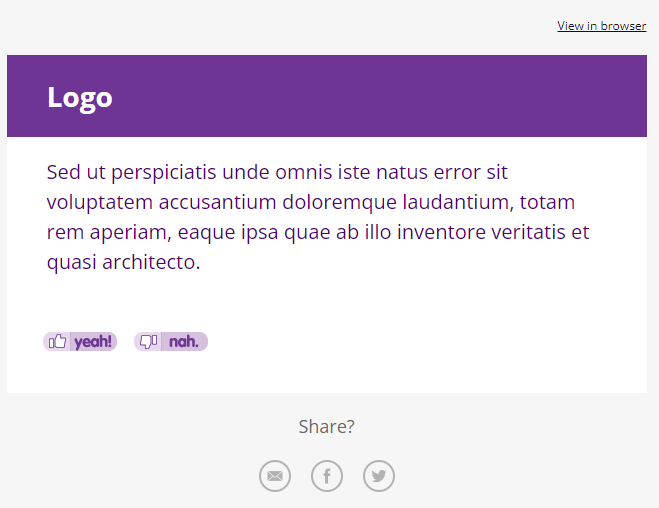“Learning to choose is hard. Learning to choose well is harder. And learning to choose well in a world of unlimited possibilities is harder still, perhaps too hard.”
Barry Schwartz, The Paradox of Choice: Why More Is Less
TLDR;
I increased my unique click throughs by up to 60% (and 11% in long term) when I included a binary choice in the subject line of my emails.

The email
My daily email sends to ~4,000 subscribers & I wanted to check if I could increase my clicks without much effort.
The content of the email is short and to the point, with 2 buttons providing choice to the reader.
It’s designed to be read quickly and then responded to, equally easy to read on mobile or desktop.
Once the reader finishes, they are presented with a choice to voice an opinion, to reveal a preference.

The layout is very simple, this really is a no-fuss email.
- The average unique open rate sits around 30%
- Unique click through rate before the test sat at around 2.35%
I’m happy with this for my daily email, I’m sure with more testing there could be more improvements, but for this specific test, I was using just the subject line.
The test on the subject line
The test is simple – I adjusted the subject line to indicate that I wanted feedback: do you like this or not?
I think of this as an informal micro-choice.
So ‘yeah or nah?‘ is added to the start of the subject, and people already get ready to think ‘do I like this?’

This approach brings the question to the attention of the reader – and when taken across multiple emails saw an average unique click through rate jump from 2.35% to 3.80%.
With my small list, we’re talking an average of 58 clicks per email more – just with a little prompt in the subject line.
For many local or small businesses a list of 4,000 or more is really large – so taking this technique into that domain means a few things.
If nothing else, you have a signal of preference.
Data from a binary choice can be used to filter & used to create further content or direct down to different customer journeys. The yes or no sentiment allows for a new conversation
Yes you like this? Great, then let’s talk.
You don’t like this? Well then let’s talk about what you do like instead.
It’s like playing 20 questions with your customer, and it’s all zero party data available for re-use.

